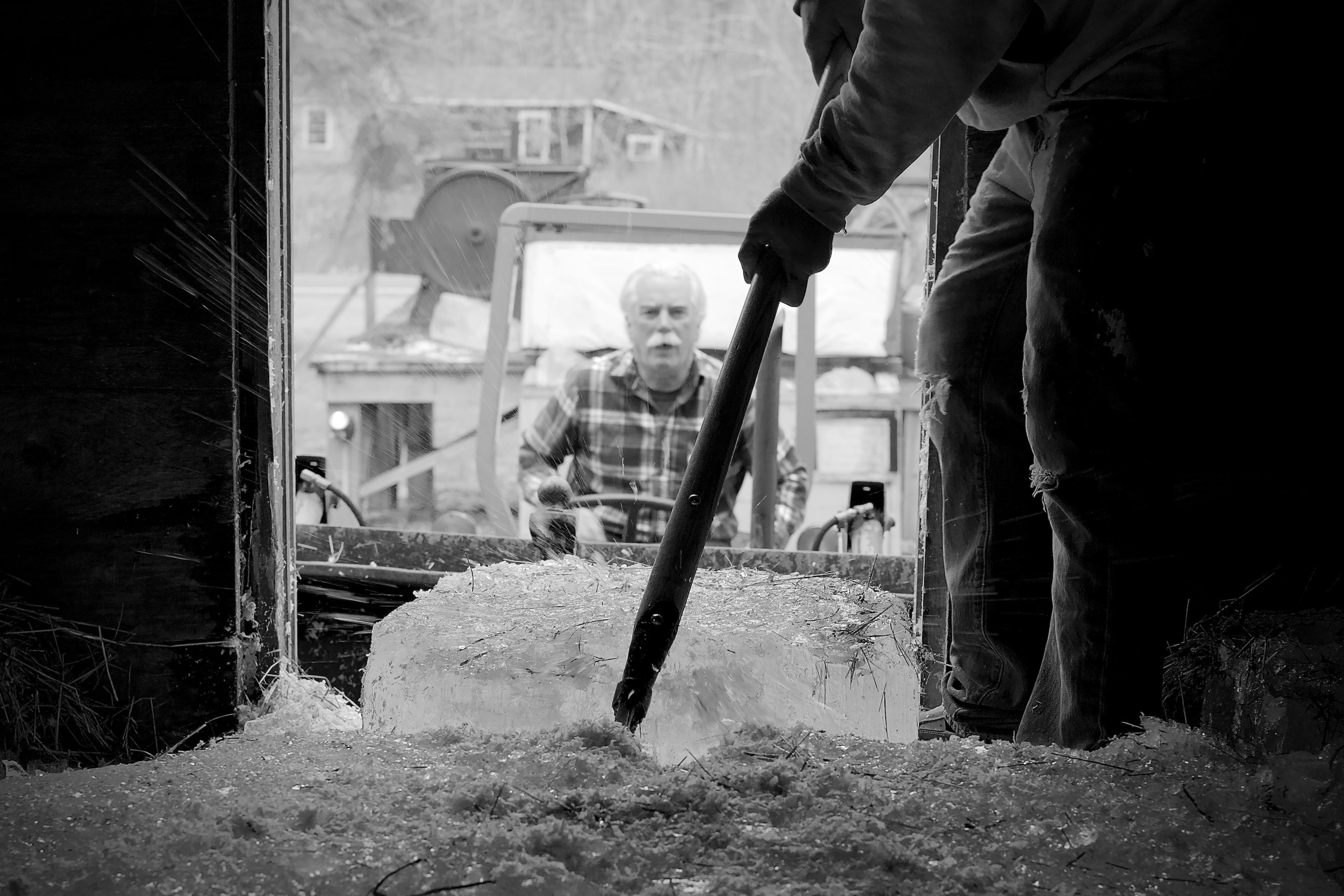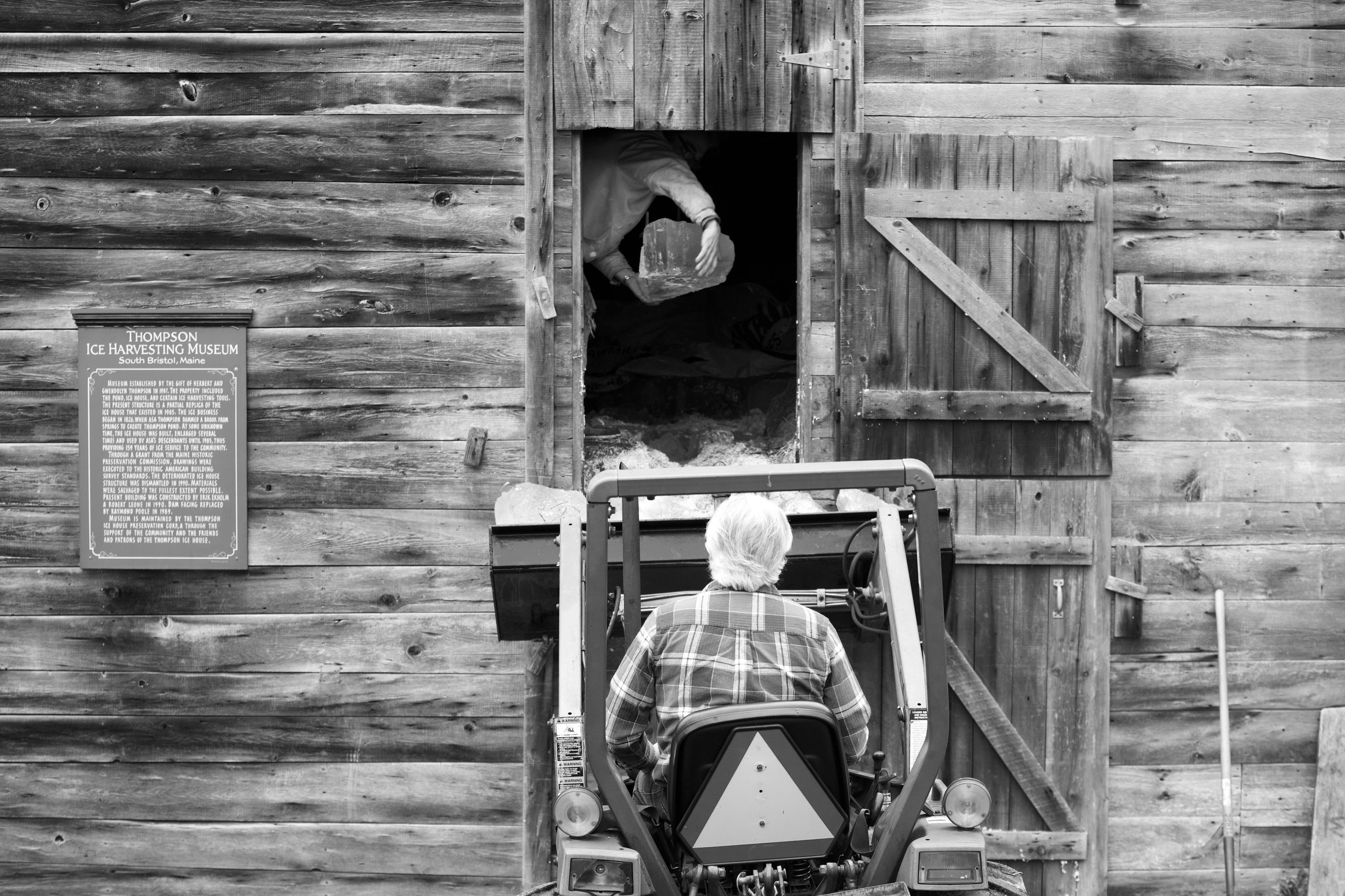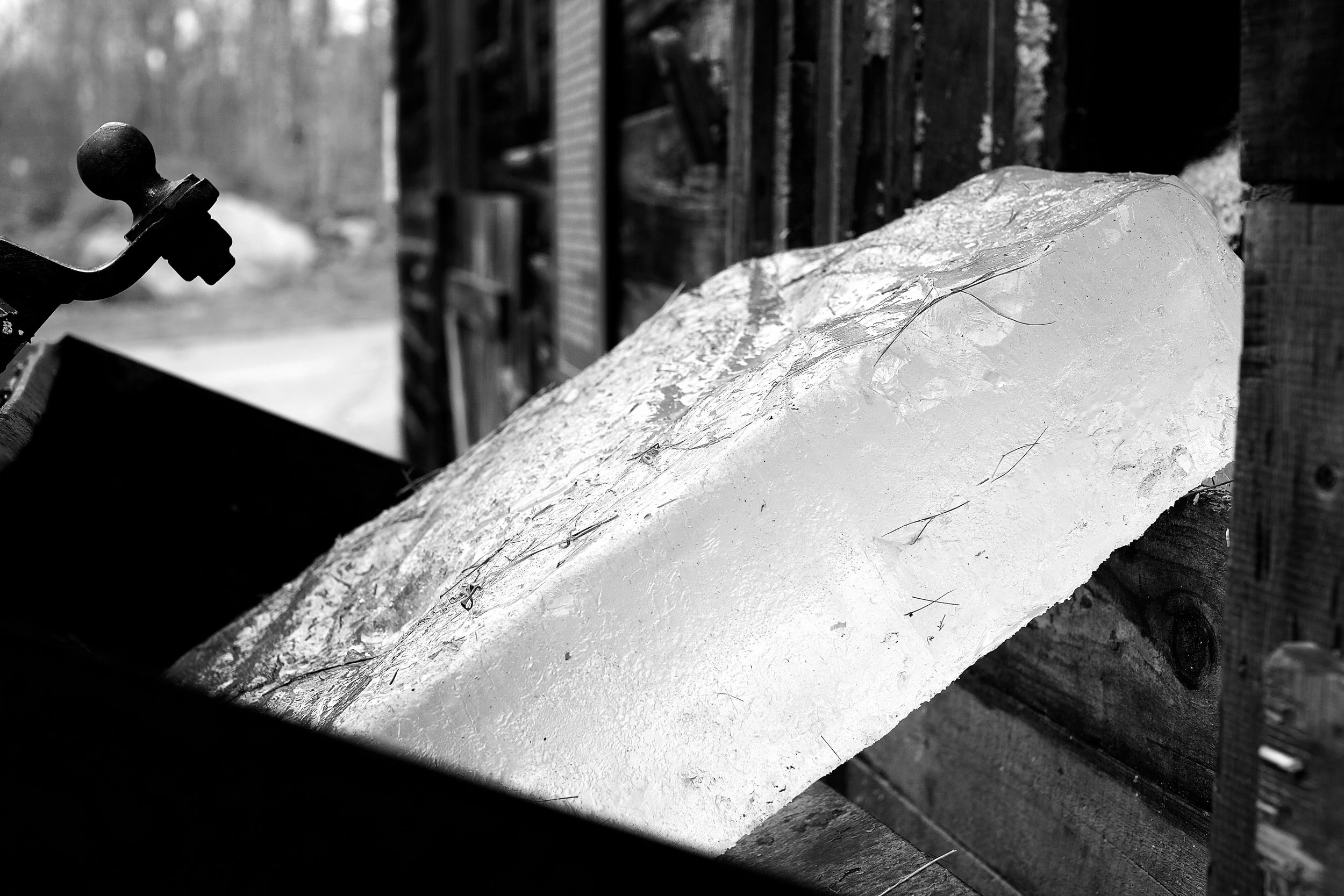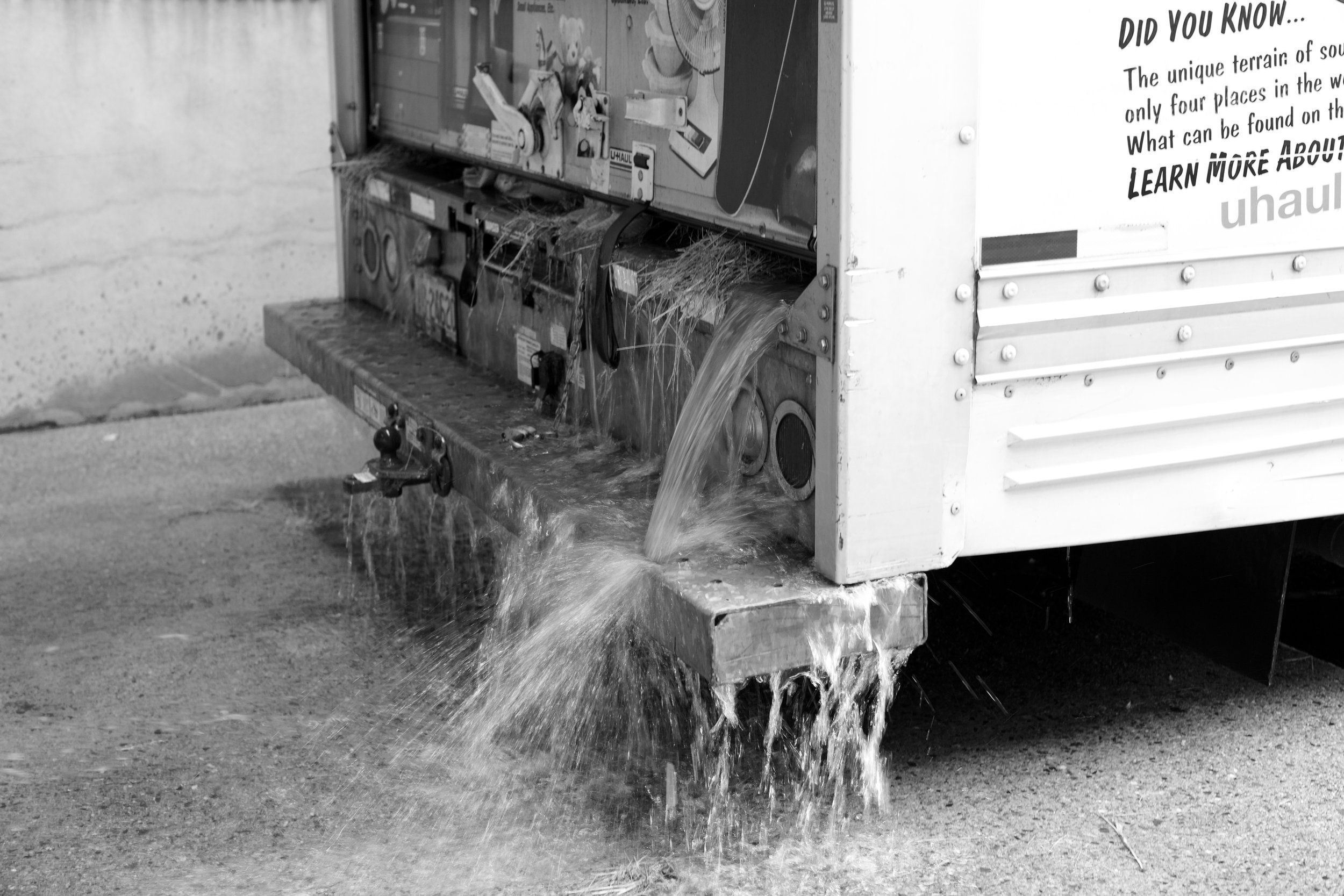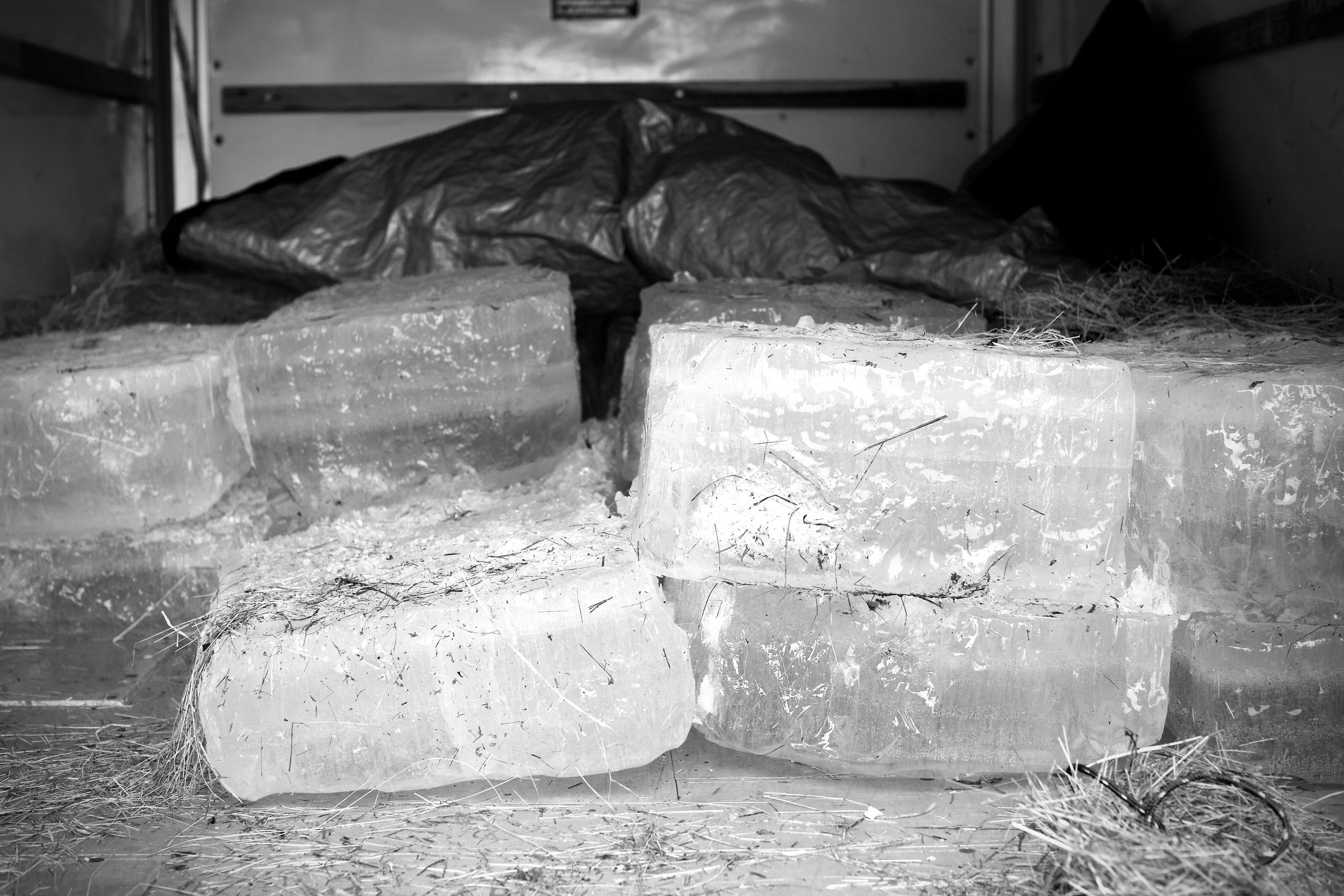Keith Hartwig
COLD CHAIN
72”H x 72”W x 54”D
Lake-harvested Ice
Project Partners: Thompson Ice House Harvesting Museum, South Bristol, ME [Project website: : https://keithhartwig.com/cryosphere]
The 216 cubic feet of lake ice installed at the Cambridge City Hall Annex were cut from the Thompson Pond in South Bristol, MA on February 17, 2019, during the annual ice harvesting festival. The festival observes the storied past of the New England ice trade, and the industry’s relationship to the unique culture, geography, and climate of the region. The ice was stored for 13 weeks in a replica 19th century ice house, kept frozen by the passive insulation of the building and the thermal properties of the ice. It was transported to the City Hall Annex and installed on the plaza on May 17, 2019.
Lake ice, like that from the Thompson Pond, was harvested, traded and used as a passive form of refrigerant for almost a century, before being outmoded by mechanical refrigeration and manufactured ice. The use of ice as a refrigerant ushered in an era of technological innovation that would transform the social and economic fabric of the world. Refrigerated warehouses, rail cars, shipping containers, as well as household refrigerators, all emerged from and relied on the affordances of ice; a network of technologies, referred to as the Cold Chain, that in aggregate increased the range of distribution, and therefore access to, nearly every perishable substance imaginable – from dairy and produce, to human blood and organs for transplant.
The potential of ice to alter time and space was brought about through its transformation from natural phenomenon to human cultivated resource. But, as ice-as-refrigerant was slowly replaced by compressor-based refrigeration technologies, its commodity value diminished; natural ice was again relegated to the world of natural phenomenon and a feature of the sublime wintry landscape. After remaining that way for almost a century, natural ice, in all its forms (frozen ponds and lakes, glaciers, sea ice, and ice caps), is once again undergoing a transformation.
Recently, natural ice has become a measurable index of planetary health and climate change; its diminishment indicative of the mounting pressures of human activity on the world. Metrics, measurements, data points, and images of melting ice circulate in scientific journals, news media, and the public imaginary; a process which is transforming natural ice into a symbol of anthropogenic climate change and of loss. While perennial ice (glaciers and ice pack) have tended to be the focus of this emerging environmental consciousness, recent research suggests that annual and seasonally occurring ice (frozen lakes, ponds, and rivers) are also threatened by a warming climate, a trend which has global and local implications. In the New England region, these bodies of water, and the ice they transform into, have long been the source of economic, cultural, and ecological vitality. As winter ice cover decreases, these bodies of water will warm sooner in the year, increasing the potential for toxic algae blooms in the summer - threatening local fish populations and the industries and ecosystems that depend on them.
By connecting the current climatological crisis to the hydrological history of the region, COLD CHAIN asks observers to reflect on their own personal relationships and commitments to these bodies of water and the ice they may (or may not) transform into.
About the Artist
Keith Hartwig is an artist and designer with a socially engaged practice, working at the intersection of the environmental humanities and science communication. His work takes the form of participatory workshops, public presentations, installation and exhibition design.
Thomson Ice House, Bristol, Maine
Blocks of lake ice assembled into a cube.
Related City resources
Net Zero: Buildings in Cambridge are responsible for over 80% of our community’s greenhouse gas emissions. In response to this reality and citizen concern over the climate impacts of new building construction, in 2013 the City kicked off a Net Zero Task Force to study and recommend ways to achieve carbon neutrality in all of Cambridge’s buildings by mid-century. The Net Zero Action Plan was adopted by the City Council in 2015 and provides a detailed roadmap to achieving this ambitious goal. Key action categories include increasing energy efficiency of existing buildings, achieving net zero emissions in new building construction, and increasing the renewable energy supply to Cambridge. You can see the impacts of the Net Zero Action Plan through programs such as the Multi-Family Energy Efficiency Pilot and Sunny Cambridge solar marketplace. Just like its genesis, the success of the Net Zero Action Plan depends on engagement of stakeholders through the Cambridge community. To learn more and get involved, visit www.cambridgema.gov/netzero
